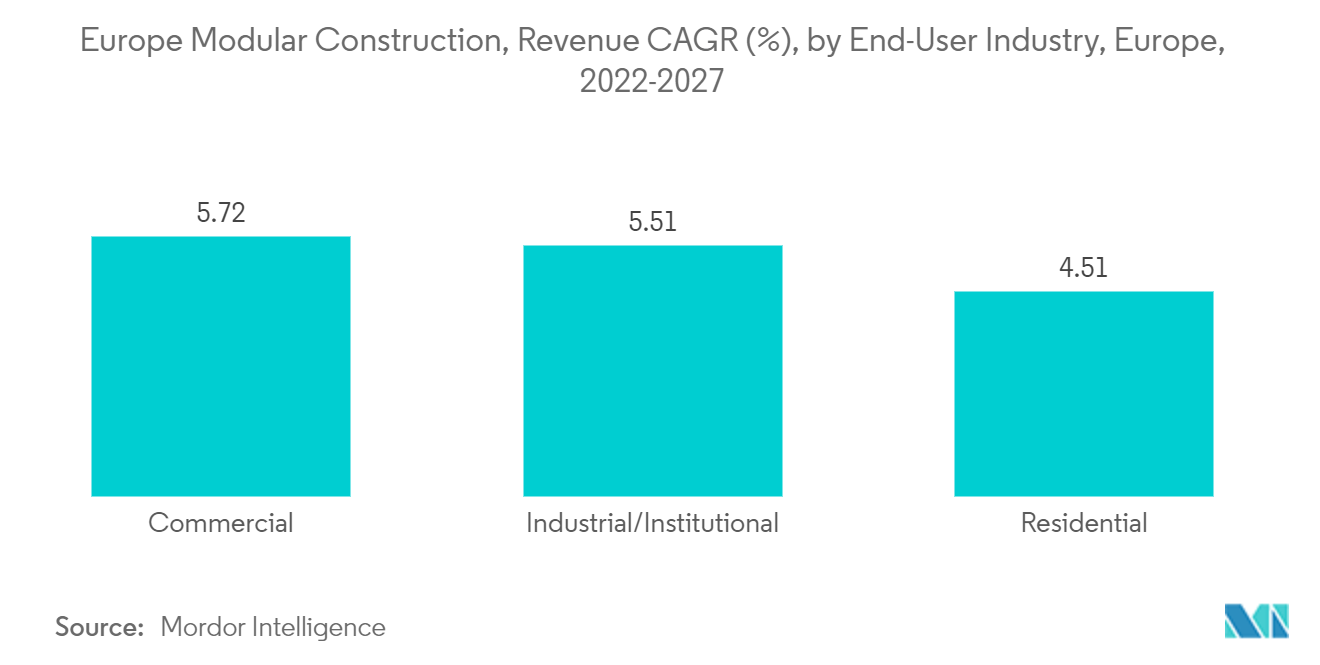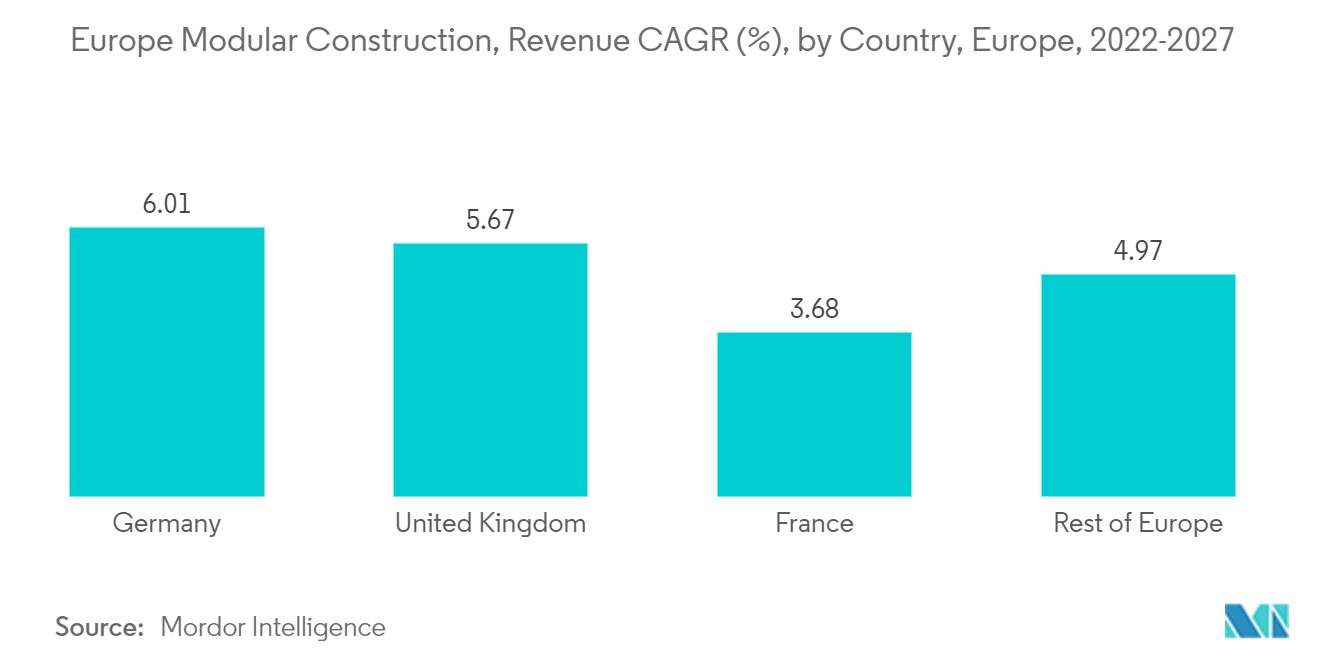Market Trends of Europe Modular Construction Industry
This section covers the major market trends shaping the Europe Modular Construction Market according to our research experts:
Commercial Sector Expected to Dominate the Market
- Commercial buildings are constructed using the modular construction process in accordance with the International Building Code (IBC) or a version of a code modeled after the IBC and state regulations.
- The European modular market is very strong for commercial buildings. The most common examples are modular office buildings being used as extensions of existing buildings when companies need more space for their workers or as temporary offices while traditional buildings are being renovated.
- In Europe, according to the Europe Hotel Construction Pipeline Trend Report, at the close of the third quarter of 2021, Europe's hotel construction pipeline stood at 1,814 projects and 295,719 rooms and remained largely unchanged year-over-year.
- Moreover, the commercial sector did benefit from the COVID-19 scenario too. In Europe, various manufacturers found an increase in demand for storage space and distribution hubs as a result of the pandemic, with e-commerce replacing regular commerce and more groceries being delivered rather than bought in-store.
All the aforementioned factors are expected to drive the modular construction market in the commercial segment.

Germany Set to Dominate Growth in the European Region
- The German economy is the largest in Europe and the fifth-largest globally. According to the International Monetary Fund (IMF), GDP was estimated to rise to 2.8% in 2021, subject to the post-pandemic global economic recovery. The GDP is forecast to register a growth rate of 2.1% in 2022.
- Germany has the largest construction industry in Europe. The prefabricated building industry in Germany is booming, with high growth in the residential sector. Along with the general boom in residential construction in the country, the share of prefabricated housing solutions in residential construction is increasing, reaching more than 20%. Additionally, the high demand for turnkey solutions is increasing the demand for prefabricated houses, thus fueling the market's growth.
- The Federal Statistical Office says that in May 2021, 32,384 homes were allowed to be built in Germany. This is 8.7% more than in April 2021.In October 2021, the construction of 29,597 dwellings was permitted in Germany. The total number of building permits from January to October 2021 increased by 4.2% compared with the same period a year earlier.
- Moreover, millions of immigrants are projected to arrive in Germany in the coming few years and may require thousands of new dwellings. In 2021, the German government plans to build approximately 1.5 million new apartments.All such growth in the construction industry is likely to propel the country's market demand for modular buildings.
- Overall, based on the above factors, it is expected that the demand for modular constructions in Germany will continue and grow during the forecast period.

